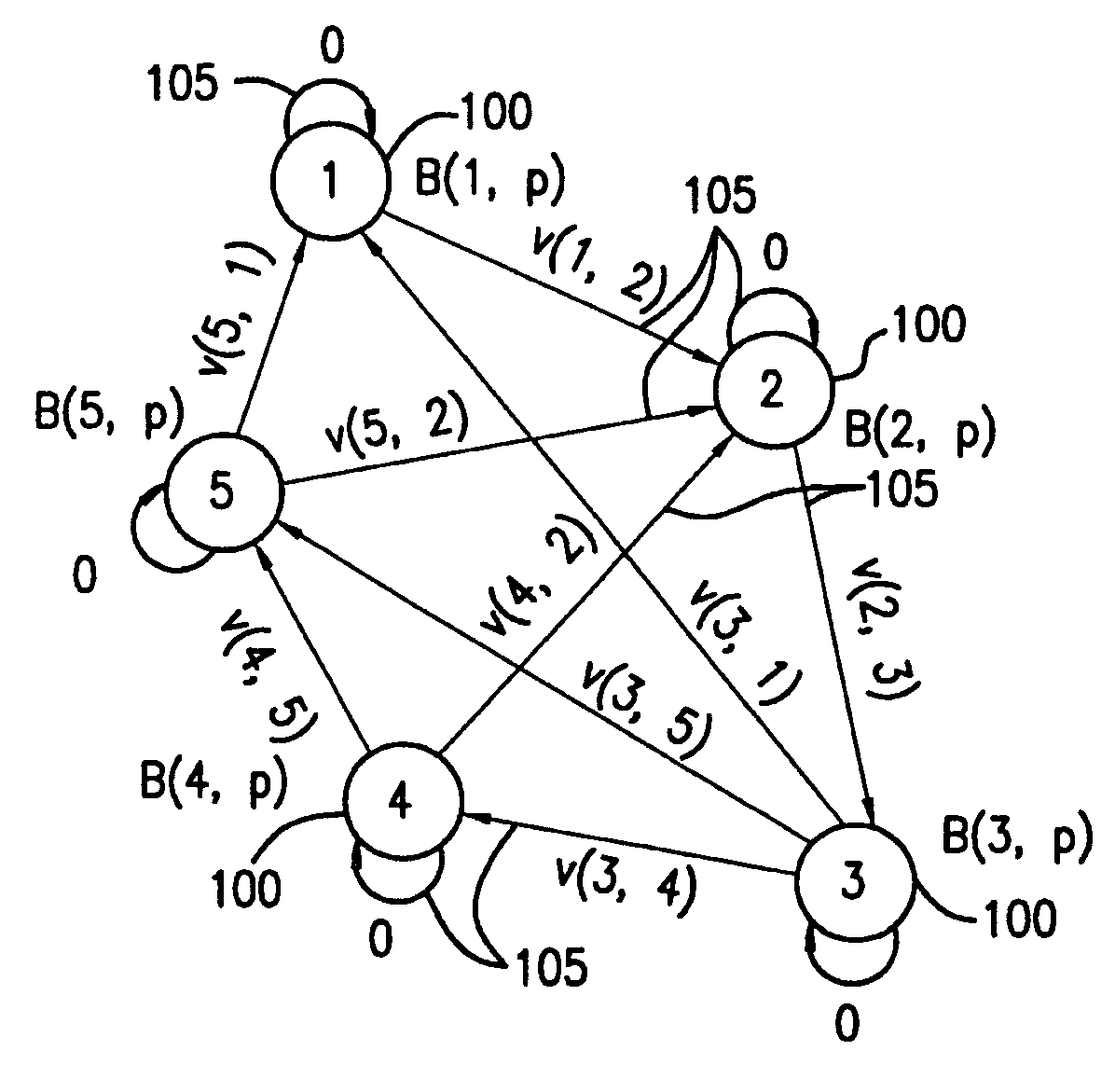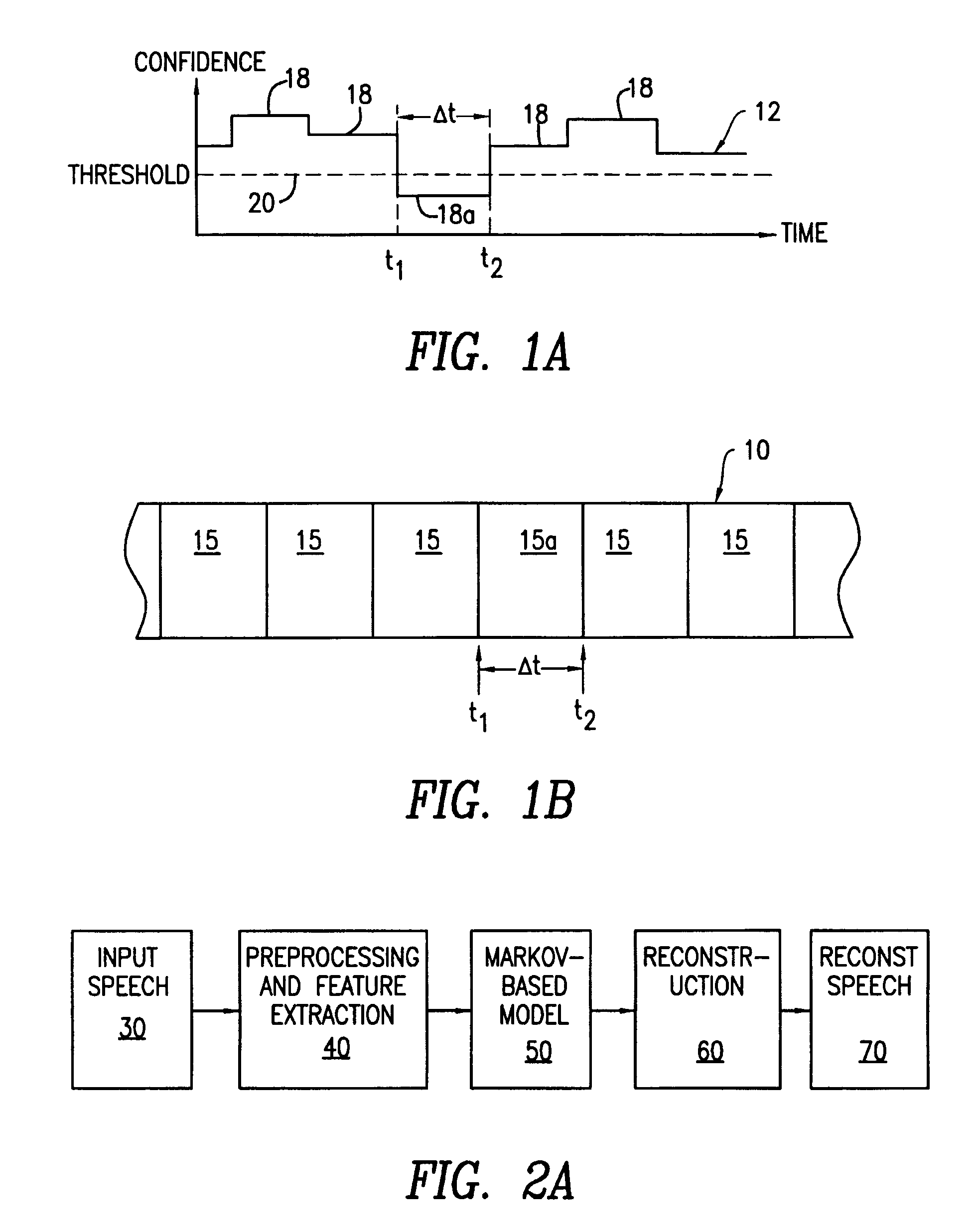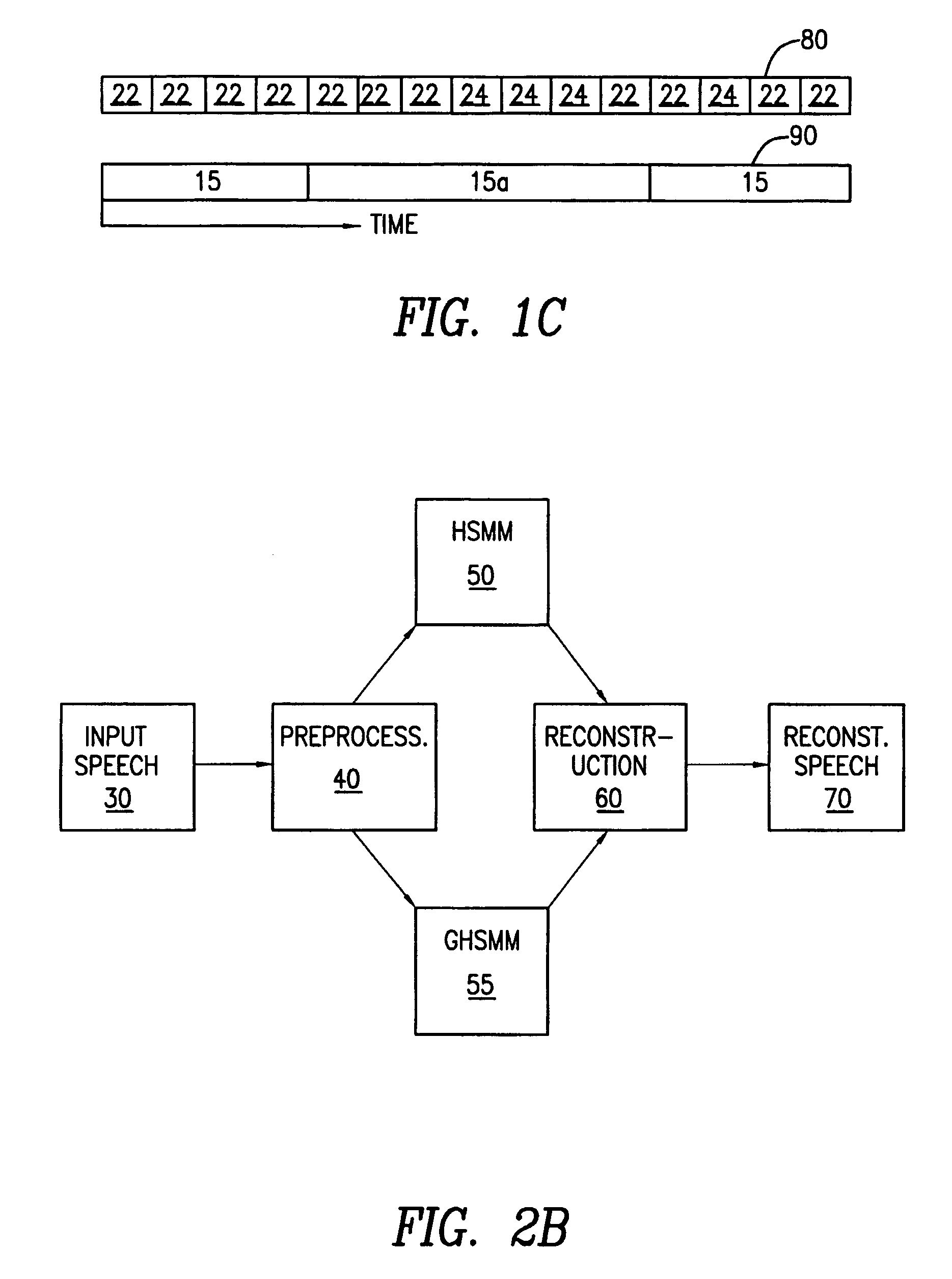System for reconstruction of symbols in a sequence
a sequence and symbol technology, applied in the field of symbols reconstruction, can solve the problems of inability to accurately determine what specific notes should have been heard, lack of knowledge of language rules, and inability to easily ascertain messages, and achieve the effect of maximizing the probability of finding the correct replacement symbol and greater than 80% accuracy
- Summary
- Abstract
- Description
- Claims
- Application Information
AI Technical Summary
Benefits of technology
Problems solved by technology
Method used
Image
Examples
example
[0128]Reconstruction using the model of FIG. 2B with GHSMM 55 was tested. Three types of reconstruction simulations using the GHSMM on a 200 word vocabulary were performed. Words in the vocabulary V were spoken by a synthesized voice.
[0129]First, words were divided into the confidence windows of FIG. 4, the appropriate phoneme damaged with noise, and the confidence window reconstructed. This was performed for increasingly populous subsets of V. Then, words themselves were damaged by noise placed at random locations for random durations. This was also performed for increasingly populous subsets V. Finally, all 200 words in V were randomly damaged and reconstructed while varying ε to examine the effect of uncertainty in transition and utterance regeneration times.
[0130]In all simulations, a reconstruction is considered correct if it contains all necessary phonemes in time order. If it does not, it is incorrect. The ratio of correct reconstructions to reconstruction attempts provides t...
PUM
 Login to View More
Login to View More Abstract
Description
Claims
Application Information
 Login to View More
Login to View More - R&D
- Intellectual Property
- Life Sciences
- Materials
- Tech Scout
- Unparalleled Data Quality
- Higher Quality Content
- 60% Fewer Hallucinations
Browse by: Latest US Patents, China's latest patents, Technical Efficacy Thesaurus, Application Domain, Technology Topic, Popular Technical Reports.
© 2025 PatSnap. All rights reserved.Legal|Privacy policy|Modern Slavery Act Transparency Statement|Sitemap|About US| Contact US: help@patsnap.com



